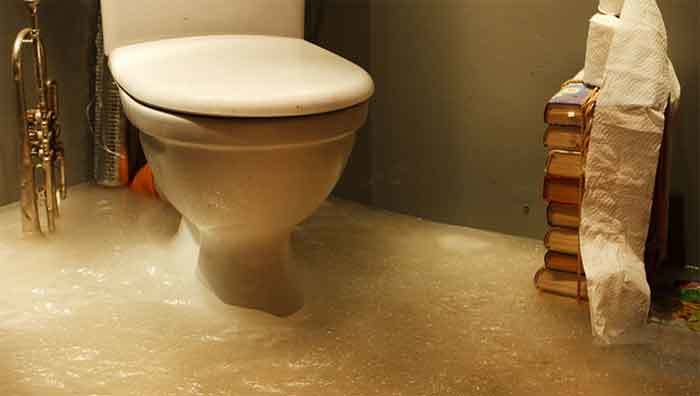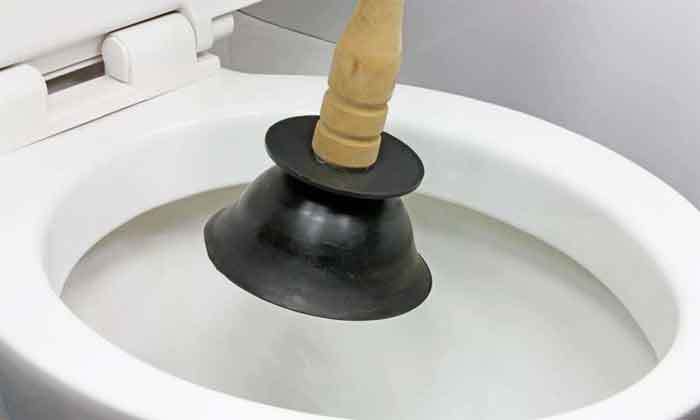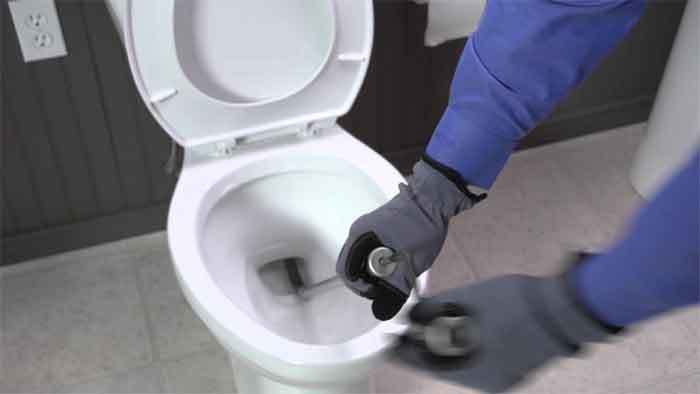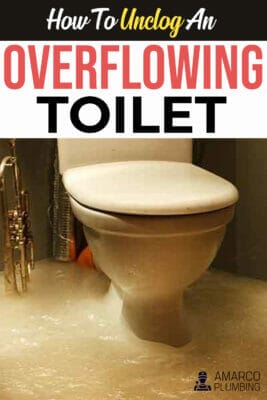Disclaimer: This post may contain affiliate links, meaning we get a small commission if you make a purchase through our links, at no cost to you. For more information, please visit our Disclaimer Page.
A clogged toilet is a really unpleasant problem, and you probably haven’t thought about it up until you got stuck with it being clogged. In order to ensure your toilet’s proper working, you will need to learn some basics of fixing your toilet.
True, there are a lot of situations and different cases that can make overflowing problems, but most commonly, you will be dealing with the sewage drain pipe size (or it simply getting dirty throughout the time) which will clog easily.
Apart from that, excessive use of toilet paper might cause these problems. It’s a fact that the clogging potential with toilet paper is little to none, but after several years of excessive throwing toilet paper into your toilet, you just need to be ready for overflowing.

If you noticed that your flush water size is just insufficient, keep in mind that it can cause a blockage as well, since your waste won’t be completely removed. Flushing additionally can only backfire at you, as it will most likely cause an overflow.
Whatever may cause your problems, we are here to show you 3 most effective solutions when it comes to unclogging an overflowing toilet. So let’s check them out!
How to Unclog an Overflowing Toilet
We will try to explain in detail 3 easiest ways of unclogging an overflowing toilet. For the first one, you will need just a hot water and soap, for the second a plunger, and for the third one - a drain snake.
1. Make Use of Hot Water and Soap
Sometimes, all it takes for your problems to be gone are a bit of soap and a hot water. Firstly, you will need to go through some preparations. Take the lid off of the toilet’s tank. Simply lift the lid gently and place it on the ground so that you can do your job without it in the way.
Lids are extremely heavy, and any dropping may cost you.
Once you secure your working area, grab at least 50-60 ml of liquid soap and pour it into the bowl. The logic behind is that liquid soap is a great lubricant and can easily unclog.
As an alternative, you can use shampoo or hand soap. Preferably, that should be liquid soap as it’s lubricating effect is better by far.
When you finish with the previous step, you are ready for the next one. Pour about 3.8 L of hot water to the bowl. Make sure that you are not using boiling water. Simply hot water will do the job.
Why are you doing this? Well, the heat can help melt down clogs caused by organic material.
There is only one thing that you should note: boiling water can highly damage the porcelain, so avoid using it.

Now, when you have done all of the previous steps, you can simply wait for the next 25-30 minutes. Sometimes, all you need is time to solve your problems. Wait for soap and hot water to work, and after that period of time check out if the water level dropped in the toilet bowl.
If yes, then it’s the time for a second round. Repeat the procedure by pouring hot water and liquid soap in your bowl, but only if you are certain that there is enough room in the bowl.
Finally, flush the toilet to see if you made it. Be careful when doing it as the toilet might flood if the water didn’t drain at all.
Pro tip: Here are some other ways to unclog a toilet without a plunger or snake.
2. Try with a plunger
Now, this is a more advanced way of unclogging your overflowing toilet. Make sure you avoid some basic mistakes and try to follow our detailed guide.
First of all, you will need to warm up your plunger. In order to do so, turn the hottest water in your sink, and let the plunger soak in it for 2 minutes. The simple logic behind this one is that it will loosen the rubber, which will fit better to the toilet’s opening.
For this cause, make sure you use a funnel plunger. You can use sink plungers as well, but funnel plungers are way more effective as they feature a rubber ring. They are quite affordable and can do the job. Shortly, you won’t need them only once, so they are items of high value.
Once you get on the job, make sure that plunger is fully covered with water. If there isn’t much water in the bowl, make sure to add it yourself, so that you can work with the optimum amount.
Put the plunger inside to fit the toilet’s exit hole. Push it down to stick it in place. The idea is to create a “vacuum”. To check if you did it correctly, you can test it by lifting the plunger. Firstly, you will feel like it is stuck, but it will slowly release the air until it fully pops off.
Therefore, push your plunger gently to release the air in it. This way, you will protect yourself from water splashing back at you. Release the air out by pushing the plunger down and then pulling it out. Once done, you are ready to do the main part.

What you need to do next is to plunge in and out for 20-25 times. Do this fast in order to do it effectively. It will force the water to the clog with enormous pressure, and possibly solve your problem. This is the most common and one of the most effective ways of dealing with the overflowing toilet.
Some water might break the clog, but just not enough. If that happens, you will most likely be left with not that much water to work with. Therefore, fill the toilet bowl with the amount of water needed to fully cover the plunger.
Once you’ve done so, get back to the previous position and repeat the plunging process with the next 15-20 ins and outs.
If this does not solve your overflowing problem, you might need to take some drastic measures - try to break a clog with drain snake, or call a professional to do it instead of you.
3. Use a drain snake
This is a more advanced solution as your problem can’t be solved with the previous two methods. A drain snake is often used in those cases when the clog is so hard to deal with.
Drain snake has a handle on the one side, and a corkscrew on the other. Of course, the corkscrew part goes to the toilet, and you should make sure to push it as far as it can go.
There are a lot of plumbing snakes, but the most suitable for this cause is an auger snake. So, once you have pushed your snake as far as it can go, it’s time to spin the handle. With one hand, keep the snake steady, and use the other to spin it clockwise.

It will latch or break the clog. In both case scenarios, you are just one step away from fixing your problem. When pulling it out, your snake might pull out some waste with it. If clog was provoked by a toy, cloth, or any other object, drain snake will probably manage to pull it out as it attaches to the clog source.
In other case scenarios, you will simply break the clog without anything pulling out with the drain snake.
Of course, once you are finished, clean the snake with hot water and soap. Dry it out with the toilet paper and store it somewhere.
Afterward, to increase the better flow of your toilet, you can use a plunge to make the clog completely disappear. Plunging it 5-7 times will be optimum to deal with the rest of the clog. When finished, flush the water and you are ready to go!
Of course, if this doesn’t work, it might be the time to call a professional.
Final Word: Unclogging an Overflowing Toilet
This annoying problem can happen to anyone. And until it strikes, you probably won’t know a single thing about unclogging.
We tried to answer one of the most common questions - how to deal with this problem?
These are some of the most effective ways of unclogging your overflowing toilet. The solutions don’t cost much and can be done within several minutes. Just make sure that you follow our instructions.
In 90% of the cases, it will solve your troubles. In the last 10%, your toilet will probably need a drain cleaner or a professional’s touch.
Hopefully, this article helped put your case in that 90%!

